WoRMS taxon details
Spisula subtruncata (da Costa, 1778)
140302 (urn:lsid:marinespecies.org:taxname:140302)
accepted
Species
Mactra deltoides Lamarck, 1818 · unaccepted
Mactra euxinica Krynicki, 1837 · unaccepted > nomen nudum
Mactra lactea Poli, 1791 · unaccepted
Mactra striata T. Brown, 1827 · unaccepted
Mactra subtruncata (da Costa, 1778) · unaccepted
Mactra subtruncata var. conemenosi Bucquoy, Dautzenberg & Dollfus, 1896 · unaccepted (synonym)
Mactra subtruncata var. inaequalis Jeffreys, 1864 · unaccepted (synonym)
Mactra subtruncata var. tenuis Jeffreys, 1864 · unaccepted (synonym)
Mactra subtruncata var. transversa Pallary, 1902 · unaccepted (synonym)
Mactra triangula Brocchi, 1814 · unaccepted
Spisula hartingi Spaink, 1958 · unaccepted > junior subjective synonym
Spisula triangula (Brocchi, 1814) · unaccepted
Trigonella subtruncata da Costa, 1778 · unaccepted
marine
(of Trigonella subtruncata da Costa, 1778) Da Costa, E. M. (1778). <i>Historia naturalis testaceorum Britanniæ, or, the British conchology</i>; containing the descriptions and other particulars of natural history of the shells of Great Britain and Ireland: illustrated with figures. In English and French. - Historia naturalis testaceorum Britanniæ, ou, la conchologie Britannique; contenant les descriptions & autres particularités d'histoire naturelle des coquilles de la Grande Bretagne & de l'Irlande: avec figures en taille douce. En anglois & françois. i-xii, 1-254, i-vii, [1], Pl. I-XVII. London. (Millan, White, Emsley & Robson). , available online at https://www.biodiversitylibrary.org/page/13116783
page(s): 198-199 [details]
page(s): 198-199 [details]
Description A solid shell with a more or less triangular shape but assymmetrical: the back is somewhat more
rounded than the front. A...
Distribution The distribution area of Spisula subtruncata stretches across the entire Belgian part of the North Sea. In the 1994-2001...
rounded than the front. A...
Description A solid shell with a more or less triangular shape but assymmetrical: the back is somewhat more
rounded than the front. A sculpture of fine concentric lines and grooves cover the shell. The growth
lines are clearly visible. Measures up to 30 mm long. Fresh specimens are cream-coloured or yellowish white with a dun epidermis. [details]
rounded than the front. A sculpture of fine concentric lines and grooves cover the shell. The growth
lines are clearly visible. Measures up to 30 mm long. Fresh specimens are cream-coloured or yellowish white with a dun epidermis. [details]
Distribution The distribution area of Spisula subtruncata stretches across the entire Belgian part of the North Sea. In the 1994-2001...
Distribution The distribution area of Spisula subtruncata stretches across the entire Belgian part of the North Sea. In the 1994-2001 period, however, a preference for the near-coastal zone could be observed. Very high concentrations (up to 1,300 ind./m2) were especially observed near the western near-coastal zone. [details]
MolluscaBase eds. (2024). MolluscaBase. Spisula subtruncata (da Costa, 1778). Accessed through: World Register of Marine Species at: https://www.marinespecies.org/aphia.php?p=taxdetails&id=140302 on 2024-07-26
Date
action
by
![]() The webpage text is licensed under a Creative Commons Attribution 4.0 License
The webpage text is licensed under a Creative Commons Attribution 4.0 License
original description
(of Mactra deltoides Lamarck, 1818) Lamarck, J.B. (1818). [volume 5 of] Histoire naturelle des Animaux sans Vertèbres, préséntant les caractères généraux et particuliers de ces animaux, leur distribution, leurs classes, leurs familles, leurs genres, et la citation des principales espèces qui s'y rapportent; precedes d'une Introduction offrant la determination des caracteres essentiels de l'Animal, sa distinction du vegetal et desautres corps naturels, enfin, l'Exposition des Principes fondamentaux de la Zoologie. <em>Paris, Deterville.</em> vol 5: 612 pp., available online at http://biodiversitylibrary.org/page/12886879 [details]
original description (of Mactra euxinica Krynicki, 1837) Krynicki, J. A. (1837). Conchylia tam terrestria, quam fluviatilia et e maribus adjacentibus Imperii Rossici indigena, quae pro mutua offeruntur historiae naturalis cultoribus. <em>Bulletin de la Société Impériale des Naturalistes de Moscou.</em> 10 (2): 50-64. Moskva., available online at http://biodiversitylibrary.org/page/41311962
page(s): 63 [details]
original description (of Mactra lactea Poli, 1791) Poli J.X. (1791). <i>Testacea utriusque Siciliae eorumque historia et anatome tabulis aeneis illustrata.</i> Ex Regio Typographeio, Parmae. Vol. 1: pp. i-lxxiii, [1-6], i-x, 1-90, 1-50, [1], 1-74, pls 1-18. , available online at https://www.biodiversitylibrary.org/page/44019471 [details]
original description (of Mactra striata T. Brown, 1827) Brown, T. (1827). Illustrations of the conchology of Great Britain and Ireland. Drawn from nature. <em>W.H. Lizars and D. Lizars, Edinburgh and S. Highley, London.</em> 144 pp., 52 pls., available online at http://www.biodiversitylibrary.org/item/127868 [details]
original description (of Mactra triangula Brocchi, 1814) Brocchi, G. B. (1814). <i>Conchiologia fossile subapennina con osservazioni geologiche sugli Apennini e sul suolo adiacente. Tomo primo</i>. pp. 1-56, I-LXXV, 1-240. Milano, Stamperia Reale., available online at https://www.biodiversitylibrary.org/page/12001697 [details]
original description (of Trigonella subtruncata da Costa, 1778) Da Costa, E. M. (1778). <i>Historia naturalis testaceorum Britanniæ, or, the British conchology</i>; containing the descriptions and other particulars of natural history of the shells of Great Britain and Ireland: illustrated with figures. In English and French. - Historia naturalis testaceorum Britanniæ, ou, la conchologie Britannique; contenant les descriptions & autres particularités d'histoire naturelle des coquilles de la Grande Bretagne & de l'Irlande: avec figures en taille douce. En anglois & françois. i-xii, 1-254, i-vii, [1], Pl. I-XVII. London. (Millan, White, Emsley & Robson). , available online at https://www.biodiversitylibrary.org/page/13116783
page(s): 198-199 [details]
original description (of Mactra subtruncata var. inaequalis Jeffreys, 1864) Jeffreys, J. G. (1862-1869). <i>British conchology</i>. Vol. 1: pp. cxiv + 341 [1862]. Vol. 2: pp. 479 [1864]. Vol. 3: pp. 394 [1865]. Vol. 4: pp. 487 [1867]. Vol. 5: pp. 259 [1869]. London, van Voorst. , available online at http://www.biodiversitylibrary.org/item/55187
page(s): 420 [details]
original description (of Mactra subtruncata var. tenuis Jeffreys, 1864) Jeffreys, J. G. (1862-1869). <i>British conchology</i>. Vol. 1: pp. cxiv + 341 [1862]. Vol. 2: pp. 479 [1864]. Vol. 3: pp. 394 [1865]. Vol. 4: pp. 487 [1867]. Vol. 5: pp. 259 [1869]. London, van Voorst. , available online at http://www.biodiversitylibrary.org/item/55187
page(s): 420 [details]
original description (of Mactra subtruncata var. transversa Pallary, 1902) Pallary, P. (1902). Liste des mollusques testacés de la baie de Tanger. <em>Journal de Conchyliologie.</em> 50: 1-39, pl. 1., available online at http://biodiversitylibrary.org/page/16318852
page(s): 35 [details]
original description (of Mactra subtruncata var. conemenosi Bucquoy, Dautzenberg & Dollfus, 1896) Bucquoy, E.; Dautzenberg, P.; Dollfus, G. (1887-1898). Les mollusques marins du Roussillon. Tome II. Pélécypodes. Paris, J.B. Baillière & fils; 884 p., 99 pl. [pp. 1-24, pl. 1-6, 1887; pp. 25-60, pl. 7-11, 1888; pp. 61-112, pl. 12-21, 1889; pp. 113-172, pl. 22-29, 1890; pp. 173-220, pl. 30-37, 1891; pp. 221-320, pl. 38-51, 1892; pp. 321-450, pl. 52-67, 1893; pp. 453-540, pl. 68-70, 1895; pp. 541-620, pl. 79-88, 1896; pp. 621-884, pl. 89-99, 1898]., available online at https://www.biodiversitylibrary.org/page/58552309
page(s): 565 [details]
original description (of Spisula hartingi Spaink, 1958) Spaink, G. (1958). <i>Spisula hartingi</i> nov. spec., a new bivalve from the Eemian in the Netherlands. <em>Basteria.</em> 22(1): 15-17., available online at https://natuurtijdschriften.nl/pub/596379/BAST1958022001003.pdf [details]
context source (Schelde) Maris, T.; Beauchard, O.; Van Damme, S.; Van den Bergh, E.; Wijnhoven, S.; Meire, P. (2013). Referentiematrices en Ecotoopoppervlaktes Annex bij de Evaluatiemethodiek Schelde-estuarium Studie naar “Ecotoopoppervlaktes en intactness index”. <em>Monitor Taskforce Publication Series, 2013-01. NIOZ: Yerseke.</em> 35 pp. (look up in IMIS) [details]
context source (BeRMS 2020) Bio-environmental research group; Institute of Agricultural and Fisheries research (ILVO), Belgium; (2015): Epibenthos and demersal fish monitoring data in function of wind energy development in the Belgian part of the North Sea. [details]
basis of record Gofas, S.; Le Renard, J.; Bouchet, P. (2001). Mollusca. in: Costello, M.J. et al. (eds), European Register of Marine Species: a check-list of the marine species in Europe and a bibliography of guides to their identification. <em>Patrimoines Naturels.</em> 50: 180-213., available online at http://www.vliz.be/imisdocs/publications/ocrd/254404.pdf [details]
additional source Huber, M. (2010). <i>Compendium of bivalves. A full-color guide to 3,300 of the world's marine bivalves. A status on Bivalvia after 250 years of research</i>. Hackenheim: ConchBooks. 901 pp., 1 CD-ROM. (look up in IMIS) [details]
identification resource Cosel, R. von; Gofas, S. (2019). <i>Marine bivalves of tropical West Africa: from Rio de Oro to southern Angola</i>. Publications Scientifiques du Muséum, Paris, IRD Éditions, Marseille (Faune et Flore tropicales, volume 48): 1-1104.
page(s): 774-775 [details]
original description (of Mactra euxinica Krynicki, 1837) Krynicki, J. A. (1837). Conchylia tam terrestria, quam fluviatilia et e maribus adjacentibus Imperii Rossici indigena, quae pro mutua offeruntur historiae naturalis cultoribus. <em>Bulletin de la Société Impériale des Naturalistes de Moscou.</em> 10 (2): 50-64. Moskva., available online at http://biodiversitylibrary.org/page/41311962
page(s): 63 [details]
original description (of Mactra lactea Poli, 1791) Poli J.X. (1791). <i>Testacea utriusque Siciliae eorumque historia et anatome tabulis aeneis illustrata.</i> Ex Regio Typographeio, Parmae. Vol. 1: pp. i-lxxiii, [1-6], i-x, 1-90, 1-50, [1], 1-74, pls 1-18. , available online at https://www.biodiversitylibrary.org/page/44019471 [details]
original description (of Mactra striata T. Brown, 1827) Brown, T. (1827). Illustrations of the conchology of Great Britain and Ireland. Drawn from nature. <em>W.H. Lizars and D. Lizars, Edinburgh and S. Highley, London.</em> 144 pp., 52 pls., available online at http://www.biodiversitylibrary.org/item/127868 [details]
original description (of Mactra triangula Brocchi, 1814) Brocchi, G. B. (1814). <i>Conchiologia fossile subapennina con osservazioni geologiche sugli Apennini e sul suolo adiacente. Tomo primo</i>. pp. 1-56, I-LXXV, 1-240. Milano, Stamperia Reale., available online at https://www.biodiversitylibrary.org/page/12001697 [details]
original description (of Trigonella subtruncata da Costa, 1778) Da Costa, E. M. (1778). <i>Historia naturalis testaceorum Britanniæ, or, the British conchology</i>; containing the descriptions and other particulars of natural history of the shells of Great Britain and Ireland: illustrated with figures. In English and French. - Historia naturalis testaceorum Britanniæ, ou, la conchologie Britannique; contenant les descriptions & autres particularités d'histoire naturelle des coquilles de la Grande Bretagne & de l'Irlande: avec figures en taille douce. En anglois & françois. i-xii, 1-254, i-vii, [1], Pl. I-XVII. London. (Millan, White, Emsley & Robson). , available online at https://www.biodiversitylibrary.org/page/13116783
page(s): 198-199 [details]
original description (of Mactra subtruncata var. inaequalis Jeffreys, 1864) Jeffreys, J. G. (1862-1869). <i>British conchology</i>. Vol. 1: pp. cxiv + 341 [1862]. Vol. 2: pp. 479 [1864]. Vol. 3: pp. 394 [1865]. Vol. 4: pp. 487 [1867]. Vol. 5: pp. 259 [1869]. London, van Voorst. , available online at http://www.biodiversitylibrary.org/item/55187
page(s): 420 [details]
original description (of Mactra subtruncata var. tenuis Jeffreys, 1864) Jeffreys, J. G. (1862-1869). <i>British conchology</i>. Vol. 1: pp. cxiv + 341 [1862]. Vol. 2: pp. 479 [1864]. Vol. 3: pp. 394 [1865]. Vol. 4: pp. 487 [1867]. Vol. 5: pp. 259 [1869]. London, van Voorst. , available online at http://www.biodiversitylibrary.org/item/55187
page(s): 420 [details]
original description (of Mactra subtruncata var. transversa Pallary, 1902) Pallary, P. (1902). Liste des mollusques testacés de la baie de Tanger. <em>Journal de Conchyliologie.</em> 50: 1-39, pl. 1., available online at http://biodiversitylibrary.org/page/16318852
page(s): 35 [details]
original description (of Mactra subtruncata var. conemenosi Bucquoy, Dautzenberg & Dollfus, 1896) Bucquoy, E.; Dautzenberg, P.; Dollfus, G. (1887-1898). Les mollusques marins du Roussillon. Tome II. Pélécypodes. Paris, J.B. Baillière & fils; 884 p., 99 pl. [pp. 1-24, pl. 1-6, 1887; pp. 25-60, pl. 7-11, 1888; pp. 61-112, pl. 12-21, 1889; pp. 113-172, pl. 22-29, 1890; pp. 173-220, pl. 30-37, 1891; pp. 221-320, pl. 38-51, 1892; pp. 321-450, pl. 52-67, 1893; pp. 453-540, pl. 68-70, 1895; pp. 541-620, pl. 79-88, 1896; pp. 621-884, pl. 89-99, 1898]., available online at https://www.biodiversitylibrary.org/page/58552309
page(s): 565 [details]
original description (of Spisula hartingi Spaink, 1958) Spaink, G. (1958). <i>Spisula hartingi</i> nov. spec., a new bivalve from the Eemian in the Netherlands. <em>Basteria.</em> 22(1): 15-17., available online at https://natuurtijdschriften.nl/pub/596379/BAST1958022001003.pdf [details]
context source (Schelde) Maris, T.; Beauchard, O.; Van Damme, S.; Van den Bergh, E.; Wijnhoven, S.; Meire, P. (2013). Referentiematrices en Ecotoopoppervlaktes Annex bij de Evaluatiemethodiek Schelde-estuarium Studie naar “Ecotoopoppervlaktes en intactness index”. <em>Monitor Taskforce Publication Series, 2013-01. NIOZ: Yerseke.</em> 35 pp. (look up in IMIS) [details]
context source (BeRMS 2020) Bio-environmental research group; Institute of Agricultural and Fisheries research (ILVO), Belgium; (2015): Epibenthos and demersal fish monitoring data in function of wind energy development in the Belgian part of the North Sea. [details]
basis of record Gofas, S.; Le Renard, J.; Bouchet, P. (2001). Mollusca. in: Costello, M.J. et al. (eds), European Register of Marine Species: a check-list of the marine species in Europe and a bibliography of guides to their identification. <em>Patrimoines Naturels.</em> 50: 180-213., available online at http://www.vliz.be/imisdocs/publications/ocrd/254404.pdf [details]
additional source Huber, M. (2010). <i>Compendium of bivalves. A full-color guide to 3,300 of the world's marine bivalves. A status on Bivalvia after 250 years of research</i>. Hackenheim: ConchBooks. 901 pp., 1 CD-ROM. (look up in IMIS) [details]
identification resource Cosel, R. von; Gofas, S. (2019). <i>Marine bivalves of tropical West Africa: from Rio de Oro to southern Angola</i>. Publications Scientifiques du Muséum, Paris, IRD Éditions, Marseille (Faune et Flore tropicales, volume 48): 1-1104.
page(s): 774-775 [details]
 Present
Present  Present in aphia/obis/gbif/idigbio
Present in aphia/obis/gbif/idigbio  Inaccurate
Inaccurate  Introduced: alien
Introduced: alien  Containing type locality
Containing type locality
From other sources
Biology This species probably spawns in winter and early spring. The pelagic larval stage seems to last fairly long. S. subtruncata is a suspension feeder and forms an important food item for diving birds like the Common Scooter that overwinter along the Dutch coast (Ziegelmeier, 1957; Wolff, 1973). [details]Description A solid shell with a more or less triangular shape but assymmetrical: the back is somewhat more
rounded than the front. A sculpture of fine concentric lines and grooves cover the shell. The growth
lines are clearly visible. Measures up to 30 mm long. Fresh specimens are cream-coloured or yellowish white with a dun epidermis. [details]
Distribution The distribution area of Spisula subtruncata stretches across the entire Belgian part of the North Sea. In the 1994-2001 period, however, a preference for the near-coastal zone could be observed. Very high concentrations (up to 1,300 ind./m2) were especially observed near the western near-coastal zone. [details]
Habitat S. subtruncata lives in bottoms consisting of sand and muddy fine sand (Ziegelmeier, 1957; Tebble, 1966). [details]
Habitat Spisula subtruncata occurs in different sediment types: from very fine to coarse sand and from low to high mud content. However, a preference can be observed for rather fine-grained sediments (median grain size 150-250 μm) enriched with mud (mud content of 10-40%). Spisula subtruncata is present in 60% of these sediment types. [details]
Morphology A solid shell, somewhat triangular in outline with rounded corners. Large specimens reach 25 mm in length. A sculpture of fine concentric lines and grooves covers the shell. The growth stages are clear. It is dirty white in colour, with a greenish or greyish brown periostracum. The inside of the shell is white (Tebble, 1966; Wolff, 1973; Hayward & Ryland, 1990) [details]
| Language | Name | |
|---|---|---|
| Danish | hvælvet trugmusling | [details] |
| Dutch | halfgeknotte strandschelp | [details] |
| English | subtruncate surf clamcut trough shellcut surfclam | [details] |
| French | spisule tronquéedouceron triangulaire | [details] |
| German | Stumpfe Trogmuschelgedrungene TrogmuschelDreieckige Trogmuschel | [details] |
| Modern Greek (1453-) | ΠετσινάκιΑχιβαδάκι | [details] |
Encyclopedia of Marine Life of Britain and Ireland
To Barcode of Life (20 barcodes)
To Biodiversity Heritage Library (236 publications) (from synonym Mactra subtruncata (da Costa, 1778))
To Biodiversity Heritage Library (4 publications) (from synonym Spisula triangula (Brocchi, 1814))
To Biodiversity Heritage Library (51 publications)
To Biodiversity Heritage Library (98 publications) (from synonym Mactra triangula Brocchi, 1814)
To Conchology (Spisula subtruncata cf.)
To Conchology (Spisula subtruncata)
To Conchology (Spisula subtruncata)
To Conchology (Spisula subtruncata)
To Dyntaxa
To European Nucleotide Archive, ENA (Spisula subtruncata)
To GenBank (1123 nucleotides; 8 proteins)
To Malacopics (Spisula subtruncata (da Costa, 1778) Greece, Voreio Aigaio, Lesvos, Kolpos Kallonis...
To Malacopics (Spisula subtruncata (da Costa, 1778) Netherlands, Friesland, Terschelling, beachmar...
To Malacopics (Spisula subtruncata (da Costa, 1778) Spain, Canarias, Las Palmas, Fuerteventura, Co...
To Malacopics (Spisula subtruncata (da Costa, 1778))
To Malacopics (Spisula subtruncata (da Costa, 1778))
To Malacopics (Spisula subtruncata (da Costa, 1778))
To Marine Bivalves of the British Isles webpage at National Museum of Wales
To MNHN Fossil collection (Mactra deltoides LAMARCK, 1818; Syntype; F.A50161) (from synonym Mactra deltoides Lamarck, 1818)
To MNHN Fossil collection (Mactra subtruncata (DA COSTA, 1778); Cité; F.B41469) (from synonym Mactra subtruncata (da Costa, 1778))
To MNHN Fossil collection (Mactra triangula BROCCHI, 1814; Cité; F.B41470) (from synonym Mactra triangula Brocchi, 1814)
To PESI (from synonym Trigonella subtruncata da Costa, 1778)
To PESI (from synonym Mactra subtruncata (da Costa, 1778))
To PESI (from synonym Mactra subtruncata var. inaequalis Jeffreys, 1864)
To PESI (from synonym Mactra subtruncata var. tenuis Jeffreys, 1864)
To PESI (from synonym Mactra subtruncata var. transversa Pallary, 1902)
To PESI (from synonym Mactra subtruncata var. conemenosi Bucquoy, Dautzenberg & Dollfus, 1896)
To PESI (from synonym Mactra euxinica Krynicki, 1837)
To PESI (from synonym Mactra lactea Poli, 1791)
To PESI (from synonym Mactra striata T. Brown, 1827)
To PESI (from synonym Mactra triangula Brocchi, 1814)
To PESI (from synonym Spisula triangula (Brocchi, 1814))
To PESI (from synonym Mactra deltoides Lamarck, 1818)
To PESI
To ITIS
To Barcode of Life (20 barcodes)
To Biodiversity Heritage Library (236 publications) (from synonym Mactra subtruncata (da Costa, 1778))
To Biodiversity Heritage Library (4 publications) (from synonym Spisula triangula (Brocchi, 1814))
To Biodiversity Heritage Library (51 publications)
To Biodiversity Heritage Library (98 publications) (from synonym Mactra triangula Brocchi, 1814)
To Conchology (Spisula subtruncata cf.)
To Conchology (Spisula subtruncata)
To Conchology (Spisula subtruncata)
To Conchology (Spisula subtruncata)
To Dyntaxa
To European Nucleotide Archive, ENA (Spisula subtruncata)
To GenBank (1123 nucleotides; 8 proteins)
To Malacopics (Spisula subtruncata (da Costa, 1778) Greece, Voreio Aigaio, Lesvos, Kolpos Kallonis...
To Malacopics (Spisula subtruncata (da Costa, 1778) Netherlands, Friesland, Terschelling, beachmar...
To Malacopics (Spisula subtruncata (da Costa, 1778) Spain, Canarias, Las Palmas, Fuerteventura, Co...
To Malacopics (Spisula subtruncata (da Costa, 1778))
To Malacopics (Spisula subtruncata (da Costa, 1778))
To Malacopics (Spisula subtruncata (da Costa, 1778))
To Marine Bivalves of the British Isles webpage at National Museum of Wales
To MNHN Fossil collection (Mactra deltoides LAMARCK, 1818; Syntype; F.A50161) (from synonym Mactra deltoides Lamarck, 1818)
To MNHN Fossil collection (Mactra subtruncata (DA COSTA, 1778); Cité; F.B41469) (from synonym Mactra subtruncata (da Costa, 1778))
To MNHN Fossil collection (Mactra triangula BROCCHI, 1814; Cité; F.B41470) (from synonym Mactra triangula Brocchi, 1814)
To PESI (from synonym Trigonella subtruncata da Costa, 1778)
To PESI (from synonym Mactra subtruncata (da Costa, 1778))
To PESI (from synonym Mactra subtruncata var. inaequalis Jeffreys, 1864)
To PESI (from synonym Mactra subtruncata var. tenuis Jeffreys, 1864)
To PESI (from synonym Mactra subtruncata var. transversa Pallary, 1902)
To PESI (from synonym Mactra subtruncata var. conemenosi Bucquoy, Dautzenberg & Dollfus, 1896)
To PESI (from synonym Mactra euxinica Krynicki, 1837)
To PESI (from synonym Mactra lactea Poli, 1791)
To PESI (from synonym Mactra striata T. Brown, 1827)
To PESI (from synonym Mactra triangula Brocchi, 1814)
To PESI (from synonym Spisula triangula (Brocchi, 1814))
To PESI (from synonym Mactra deltoides Lamarck, 1818)
To PESI
To ITIS
From editor or global species database
From other sources






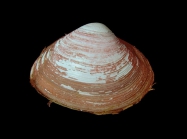

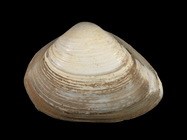
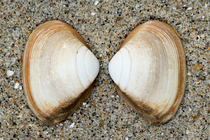
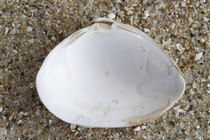
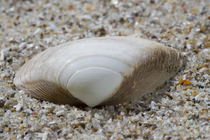


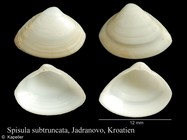
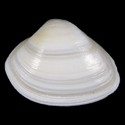
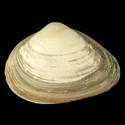
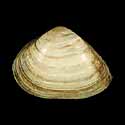
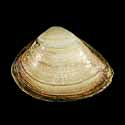
 triangula.jpg)

.jpg)


